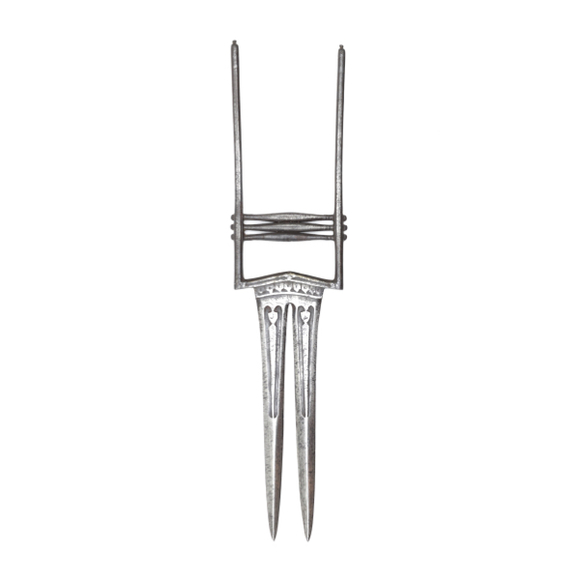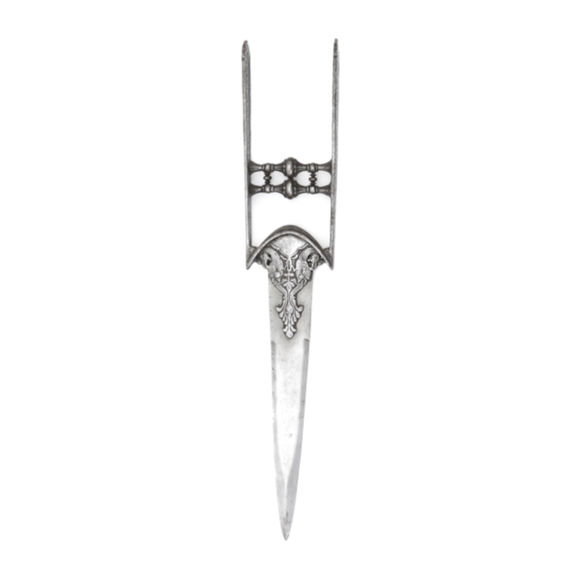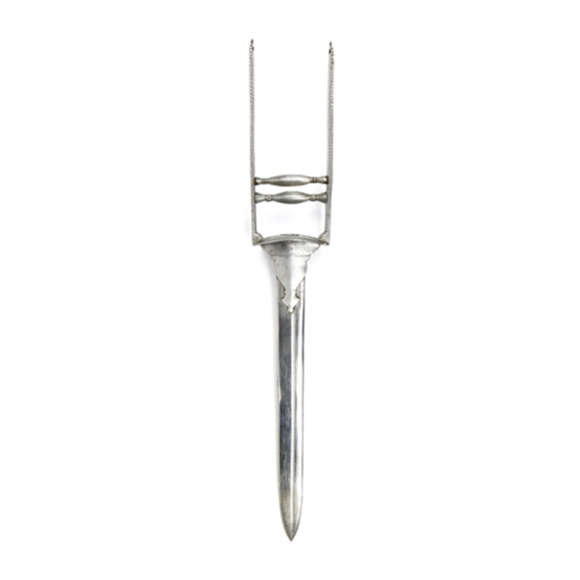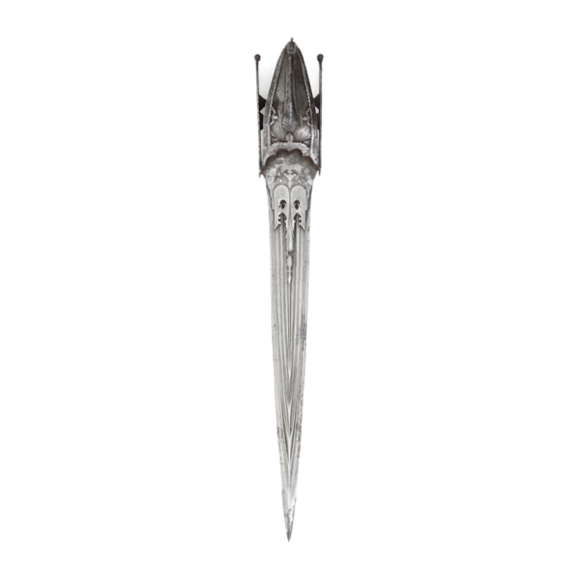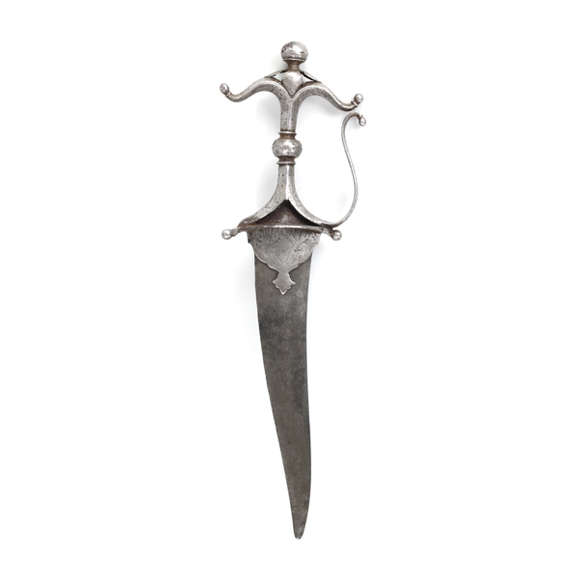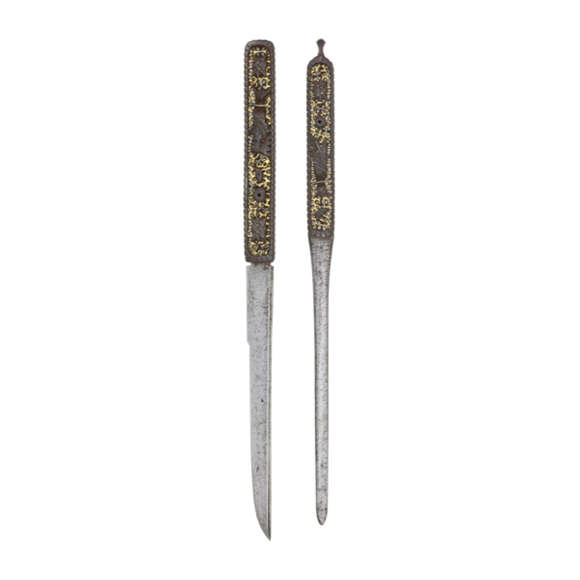Also called jamdhar doulicaneh. Forged from a single piece of steel, complete with scabbard.
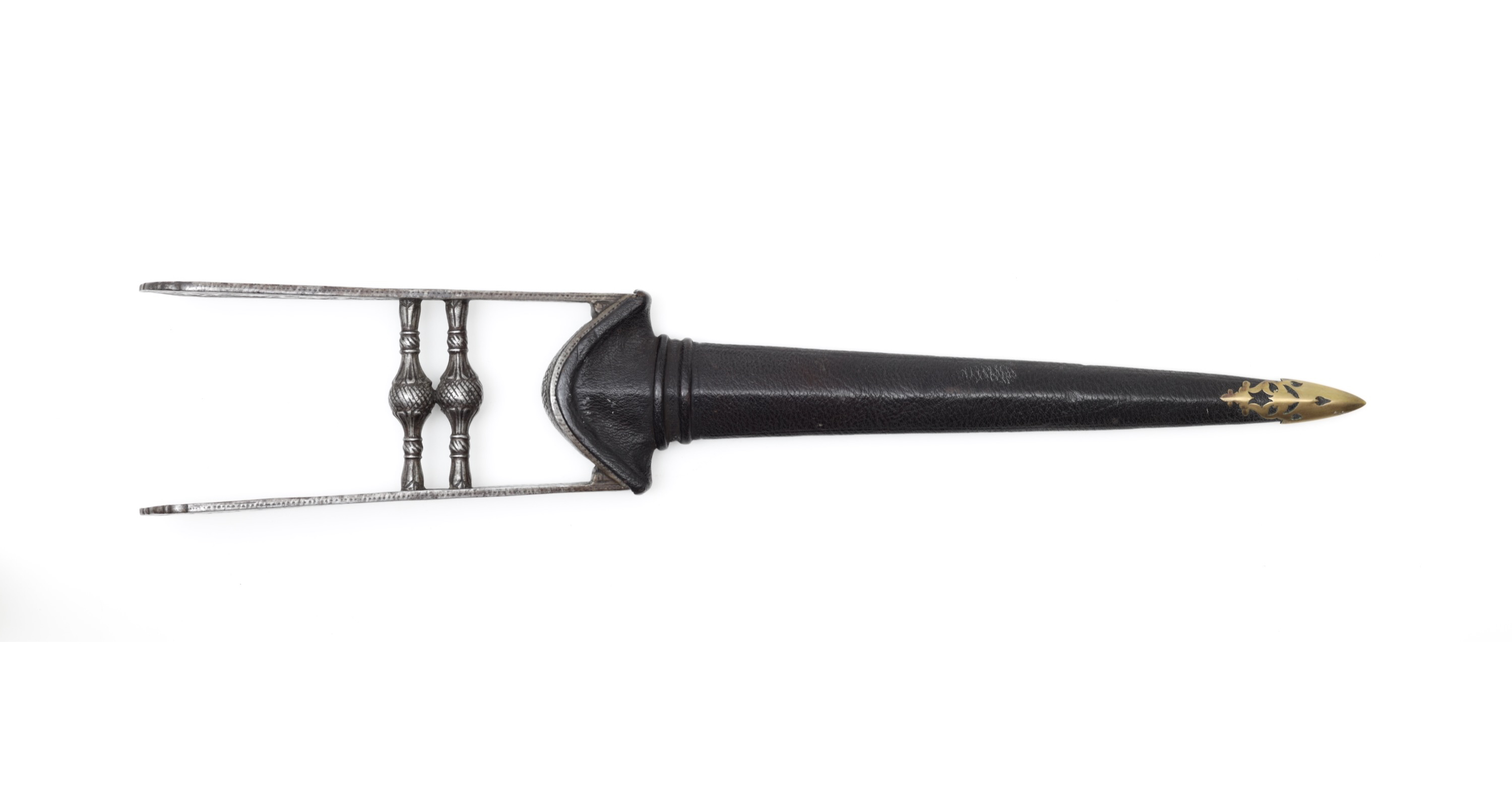
Sheathed 47.8 cm
Katar 46 cm
26.7 cm
Base 2.5 mm
Center 2.5 mm
Tip 10 mm
Base 32 mm
Middle 18 mm
5 cm from tip 10 mm
556 grams
At base of langets
Katar: steel
Scabbard: wood, leather, brass, thread
Katar: Deccan
Scabbard: North India
18th century
Description
An Indian katar with an unusually shaped blade. Seen from the top it has a narrow triangle shape but seen from the side the base of the blade is very thin with a thick armor-piercing tip. At its thickest, the lozenge shaped cross-section of the tip reaches 10mm by 10mm.

The hilt is entirely textbook southern style; holding the blade with rivets between two langets that sit on a characteristic cupped base. The sidebars gently flare out toward their tips and the grips have two balls in the center. The nature of the floral decoration suggests it is probably from the Deccan.
Scabbard
The katar comes in a perfectly preserved scabbard with a black, fine-grained bookbinder's grade leather covering and two pierced brass scabbard endpieces. Some damage and losses to wood and leather at the scabbard mouth.
We have another katar in our current collection that came with this piece, and is in a scabbard of identical materials, style and workmanship. The scabbard is decisively Northern in style, and suggests this Southern katar at some point ended up in service in the North.

This katar (left) compared to the other katar in our collection.
Both pieces came from the same source and have probably been together for a long time.
Because I like to keep both pieces together, I can offer them both as a package for €2600,-.
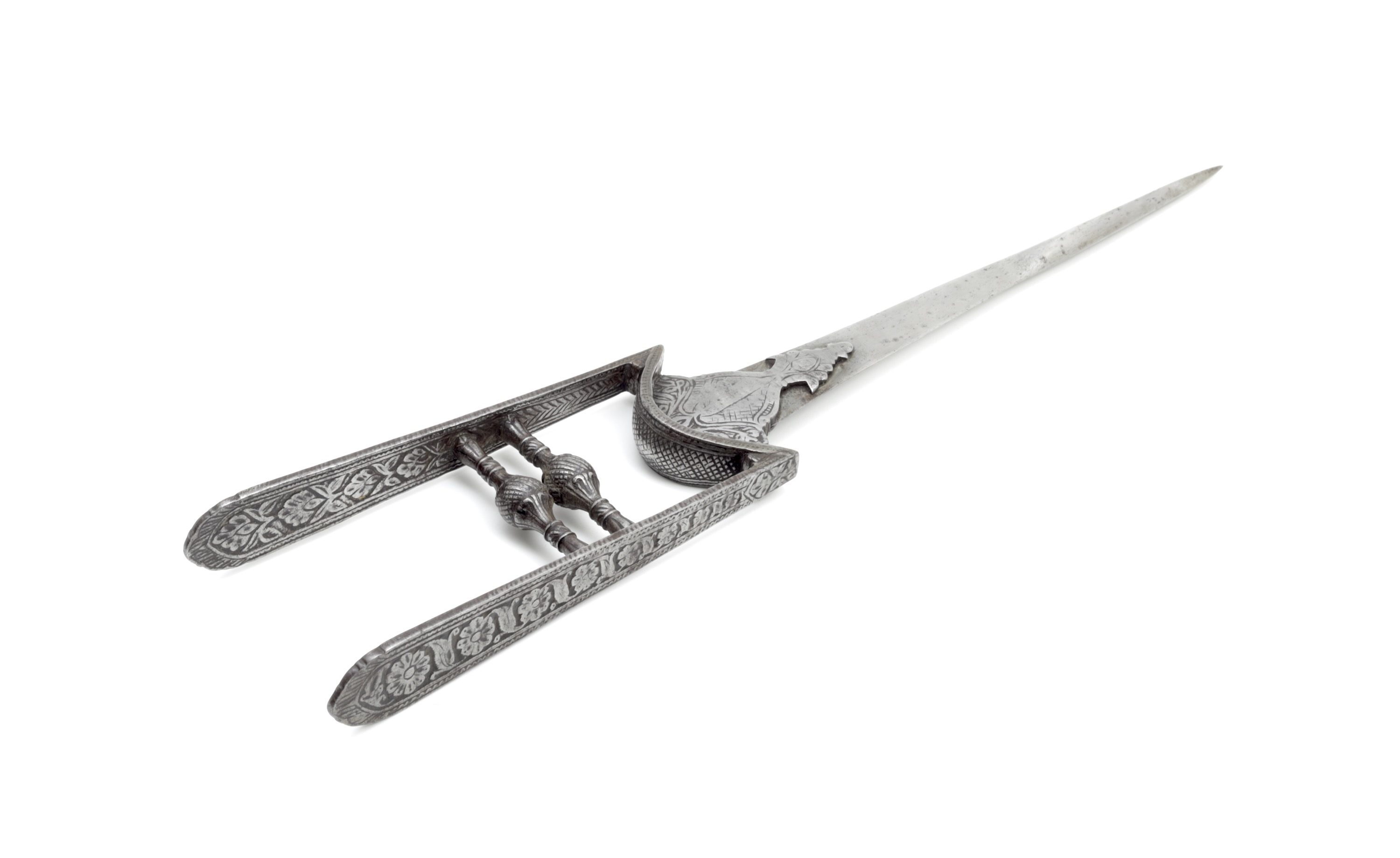

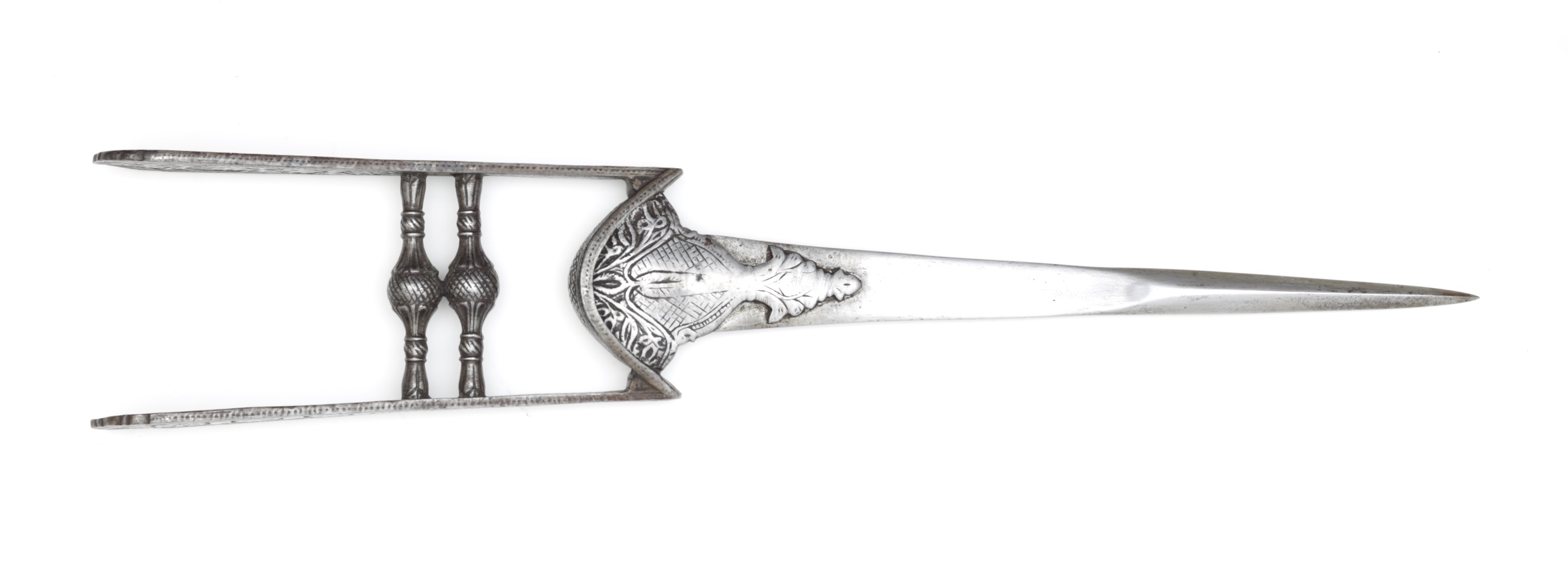
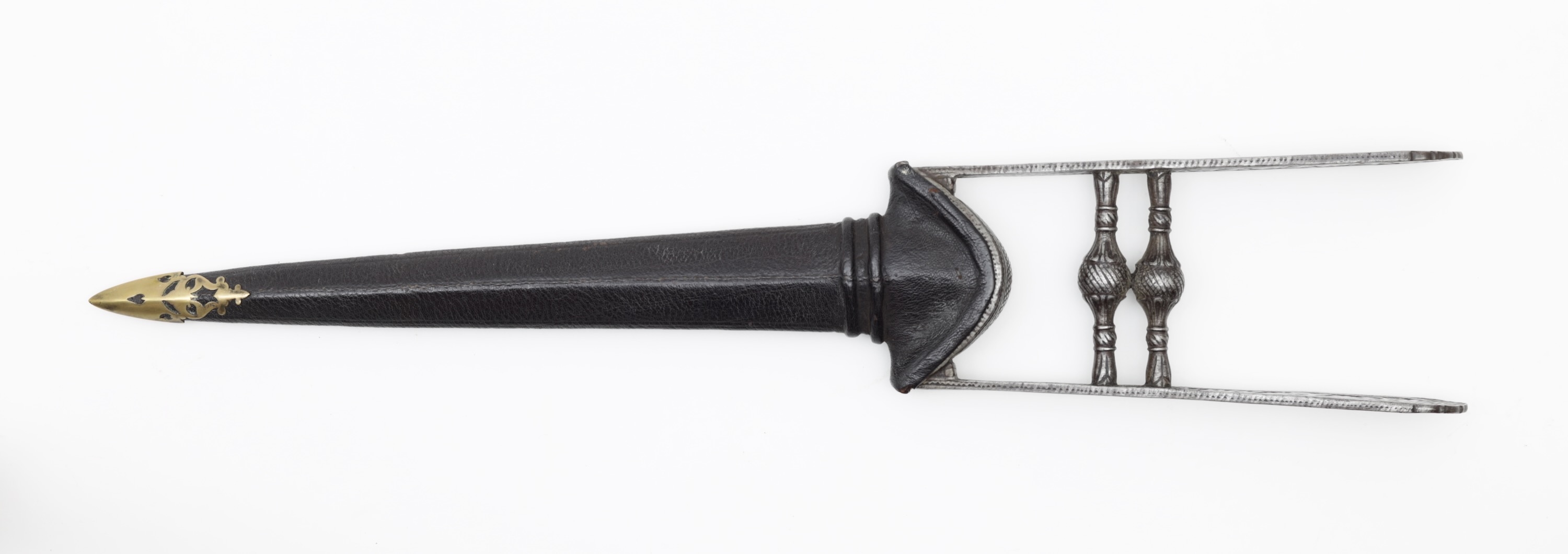
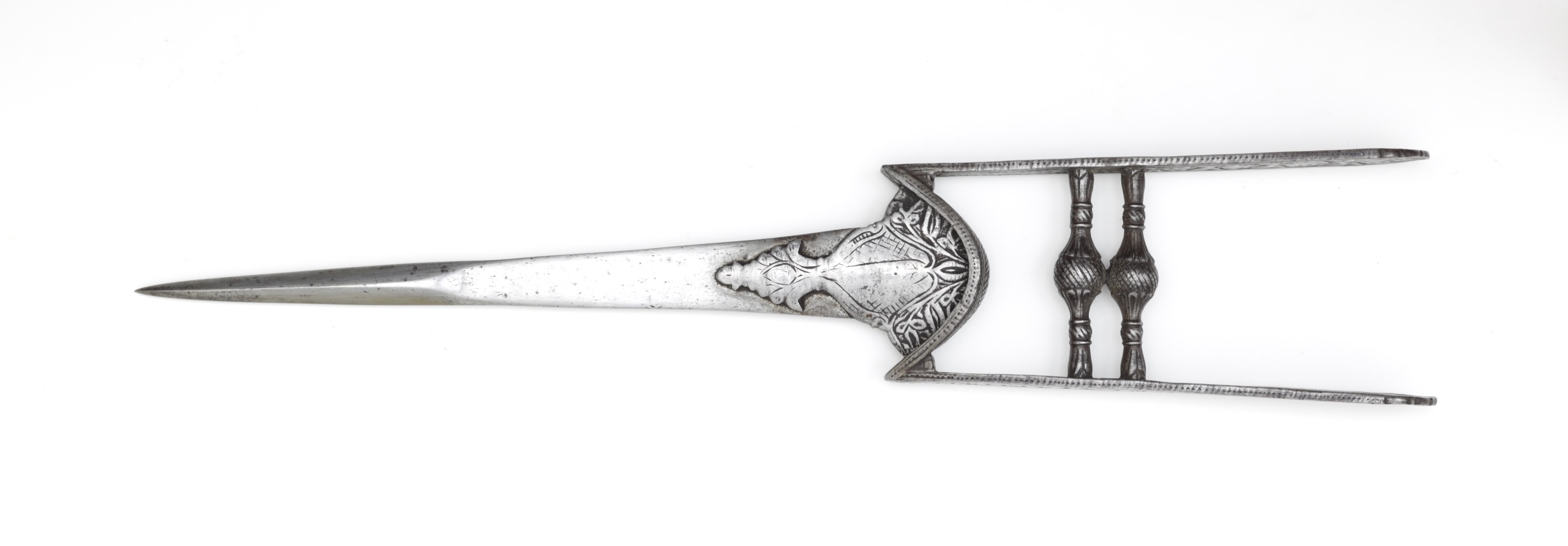


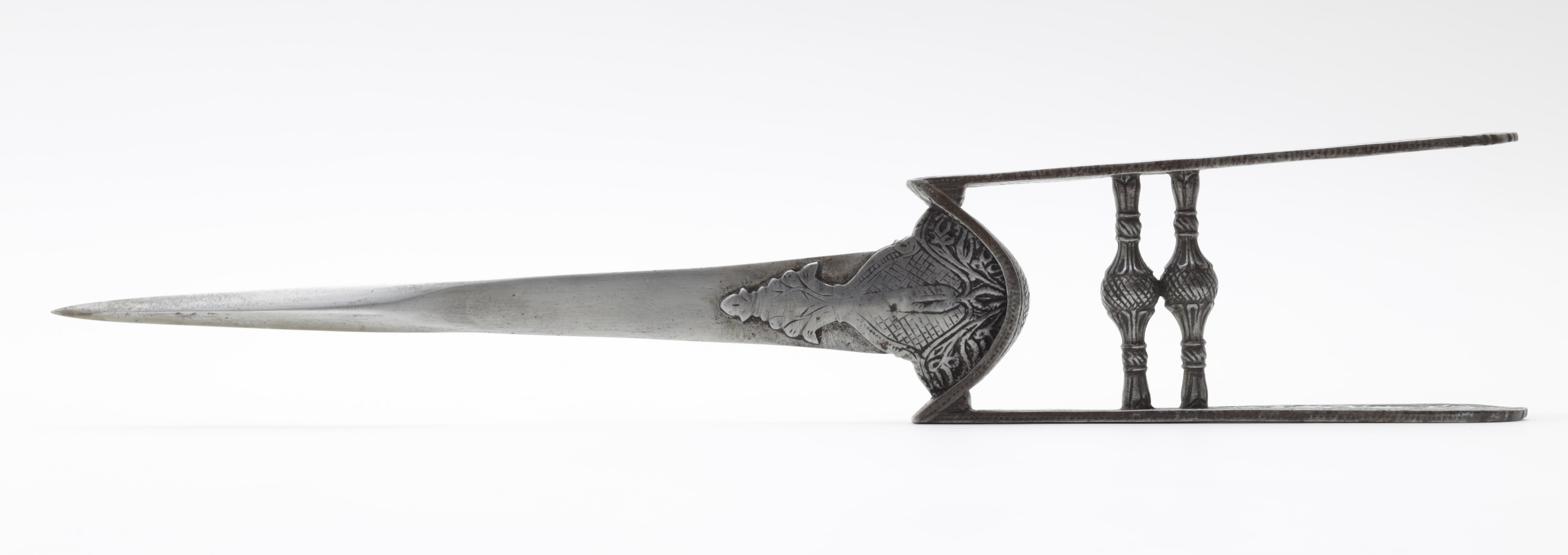
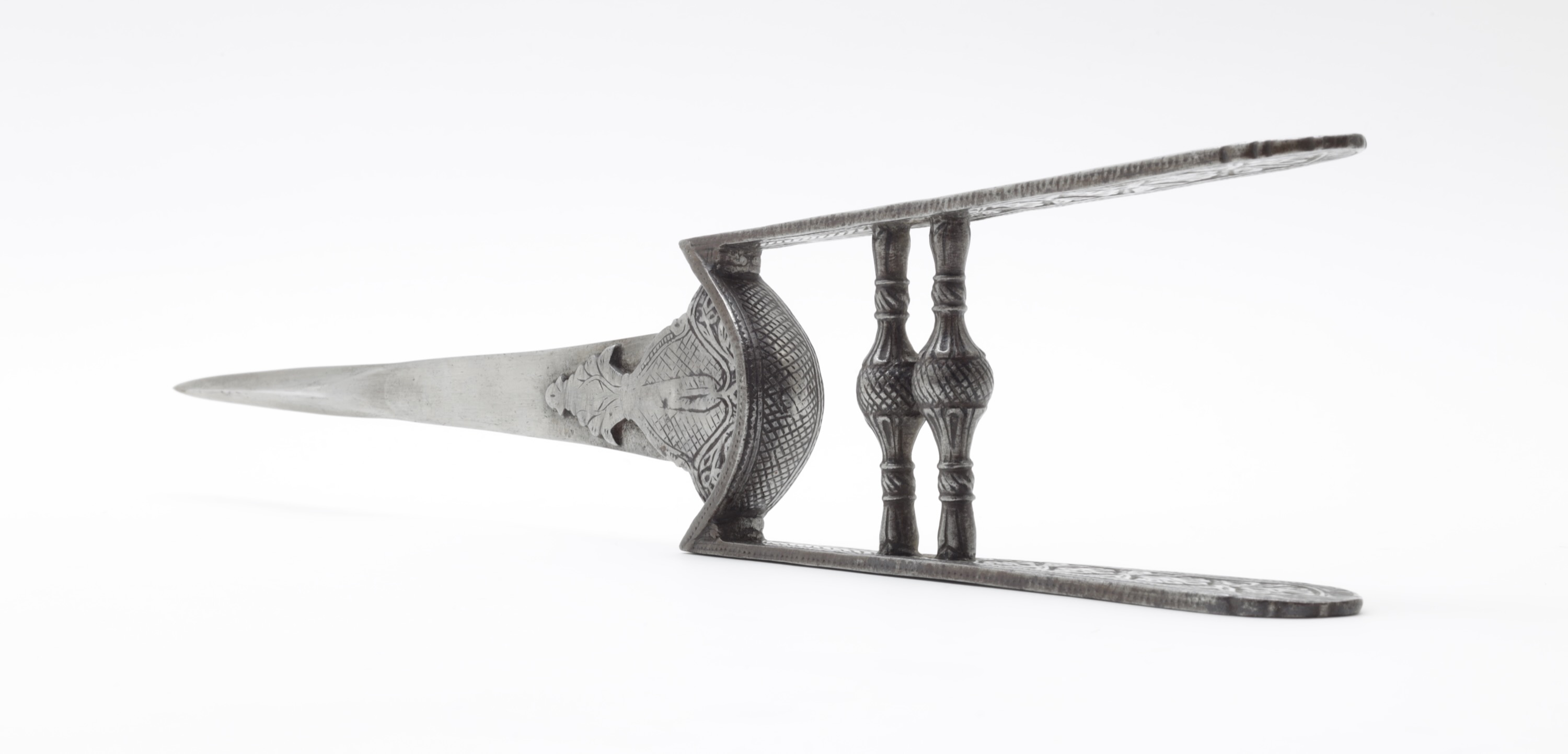
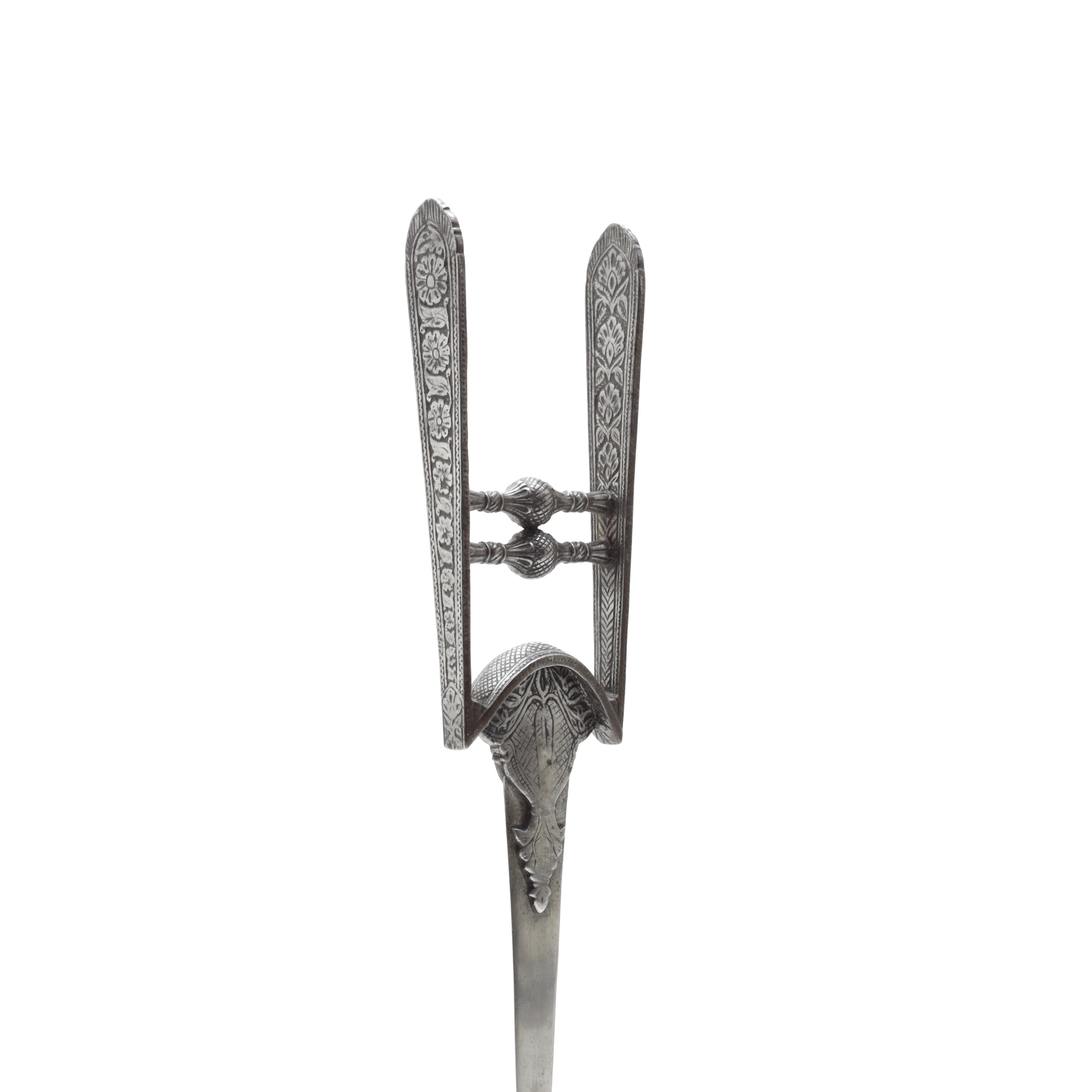
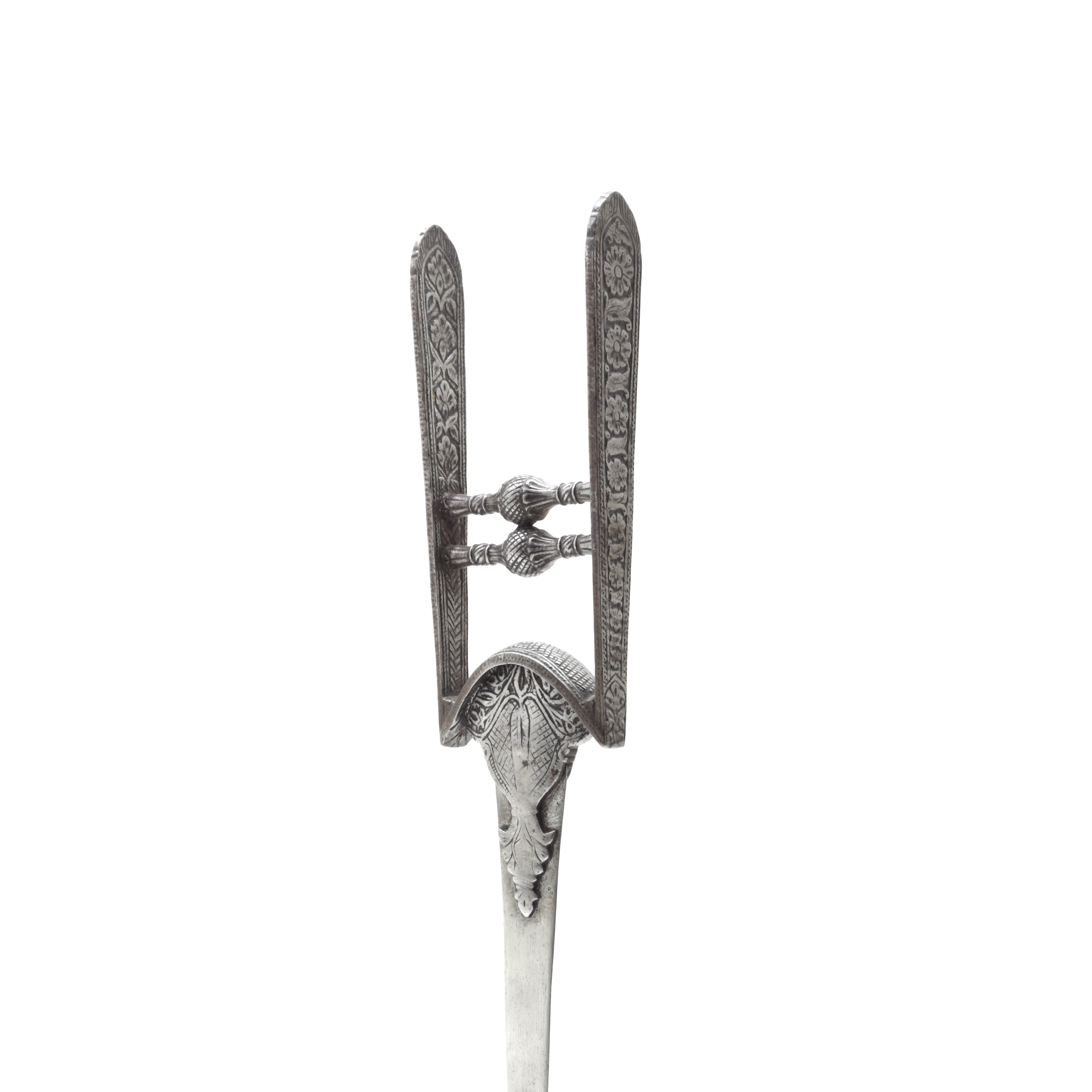
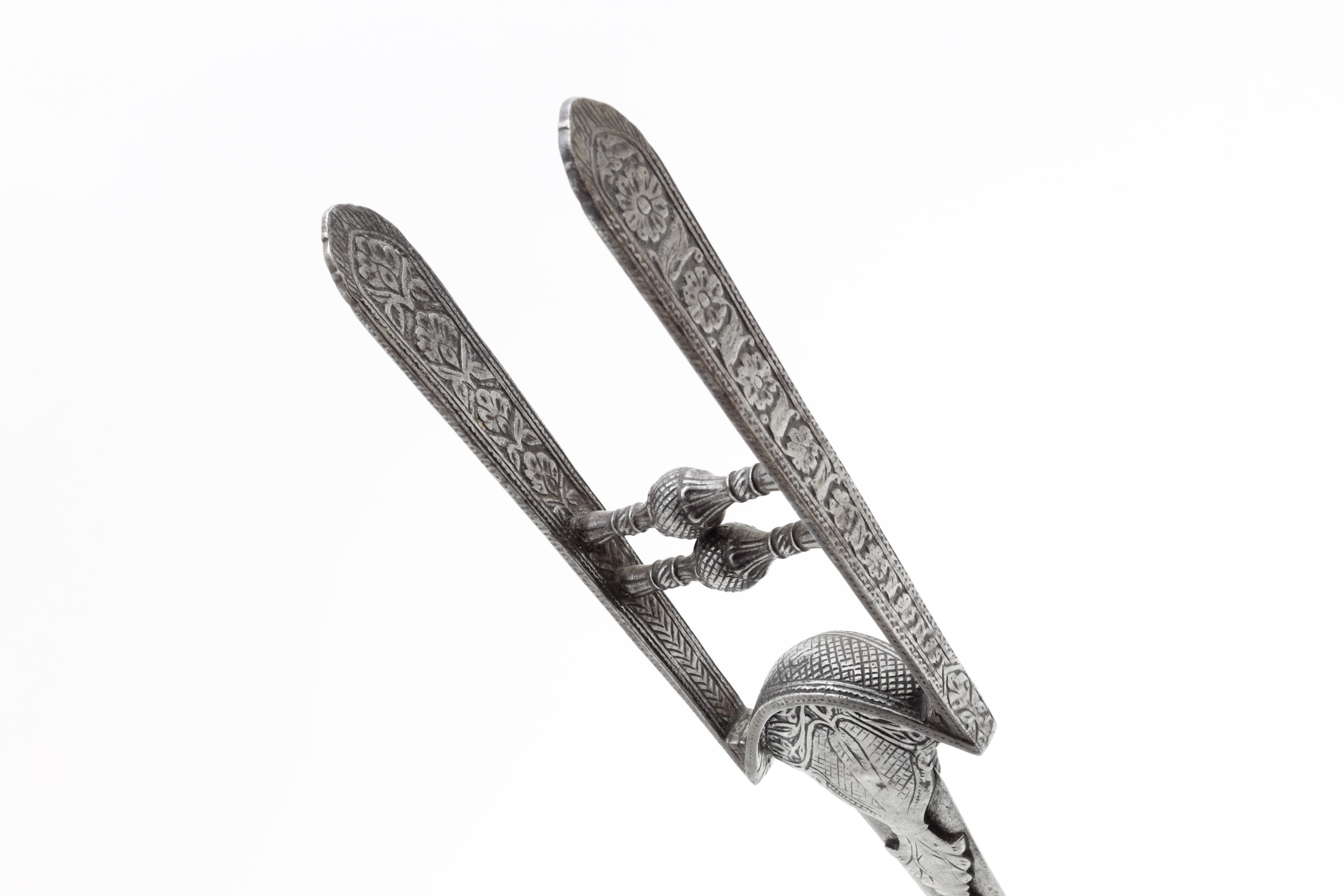
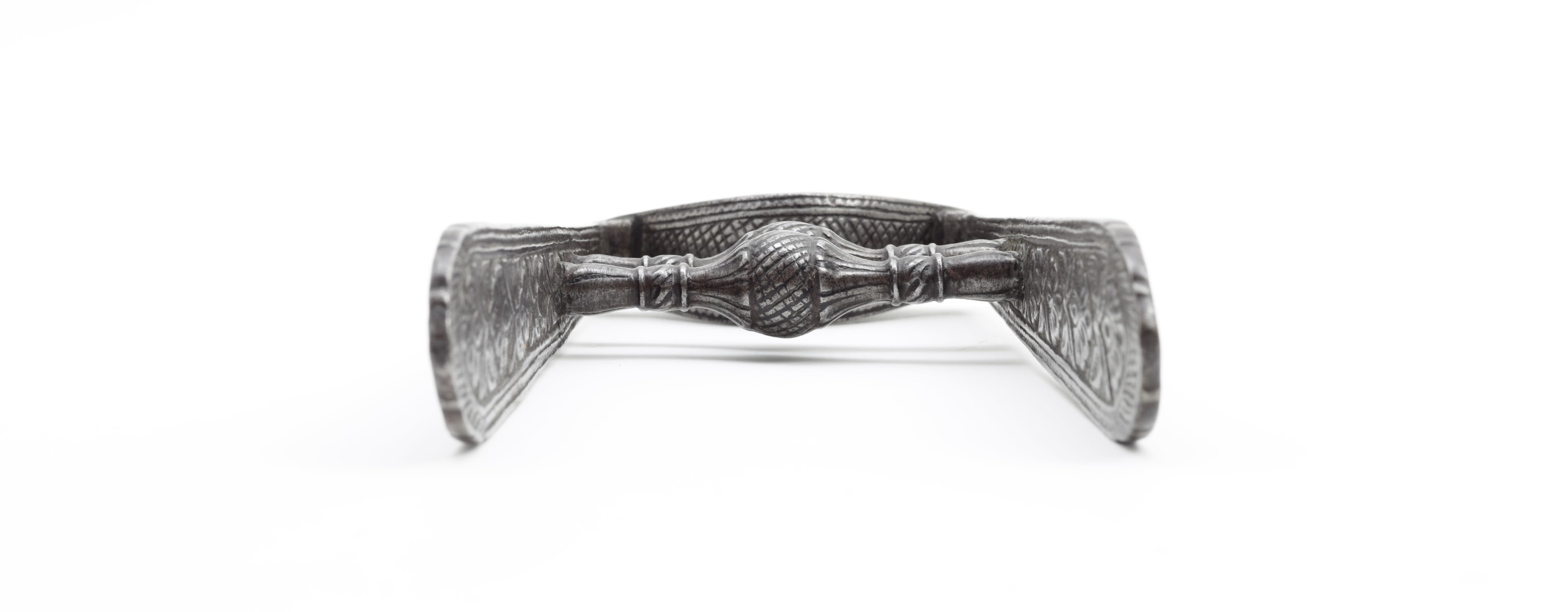
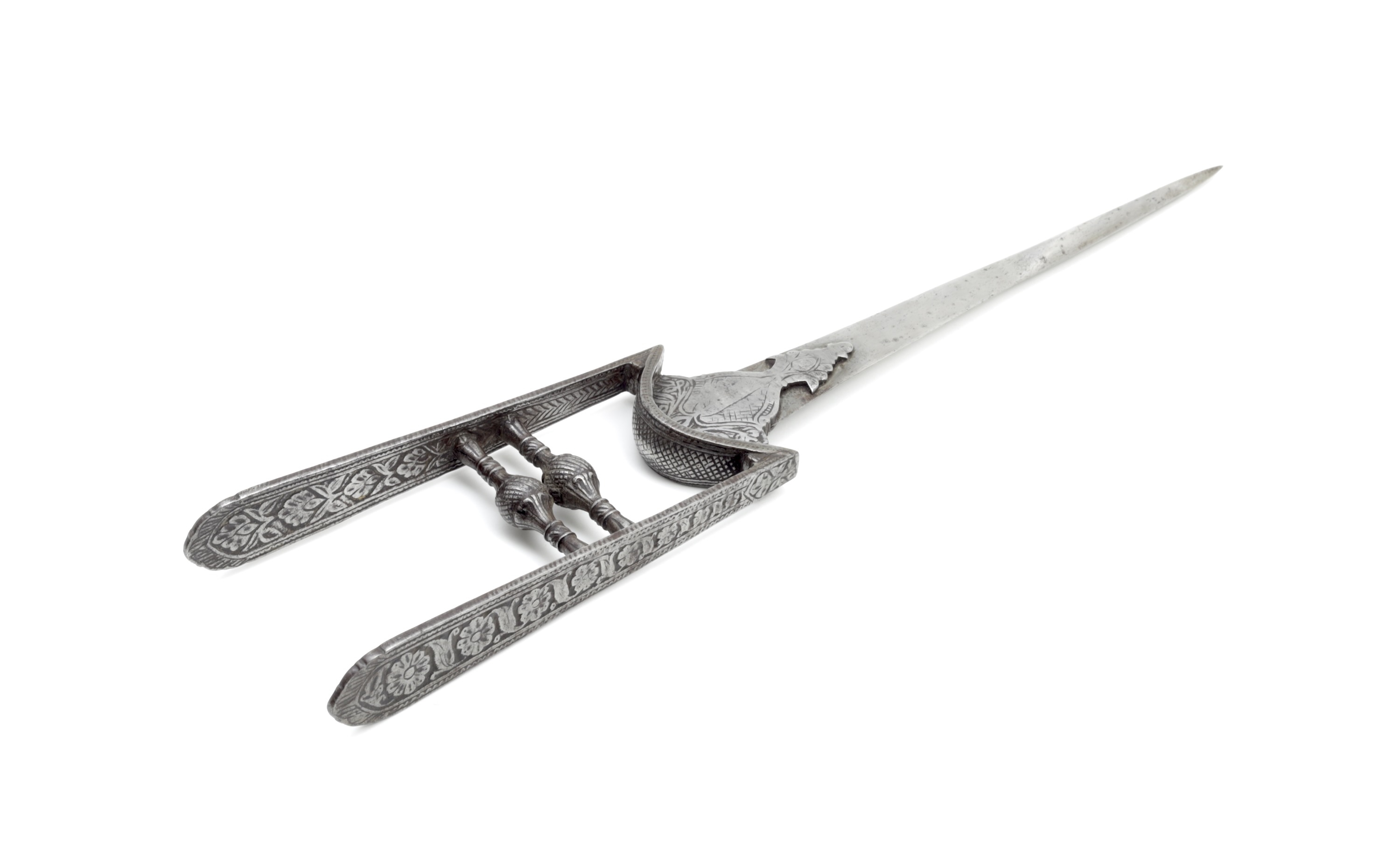
Of a style often associated with Tanjore, the seat of the Vijayanagara empire.
An interesting South Indian style katar with an imported European blade.
Somewhat worn but once very high-quality, with great sculptural qualities and remains of silver "true…
The only set of its type known to me in both private and museum collections.

